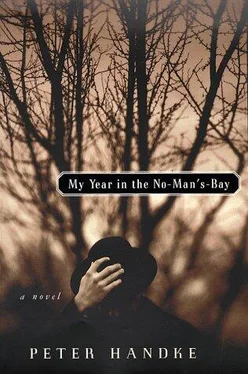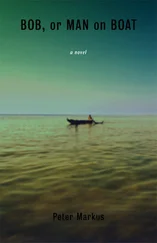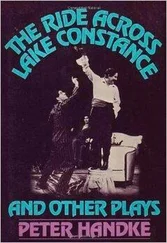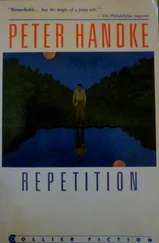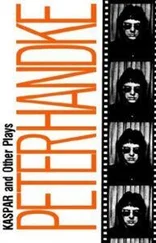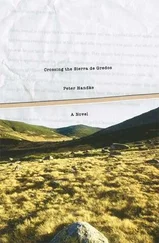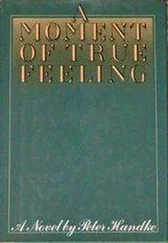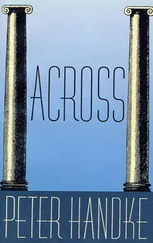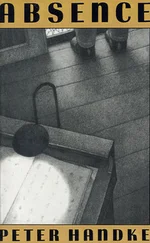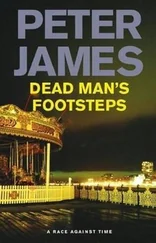In addition, from time to time he fired, even under a clear blue sky, a sort of weather cannon, and called in yet more machines to spear intruder leaves that blew in from neighboring yards, for burning out a mole tunnel, for smoking out an ant heap, for neutralizing the squawking of sparrows, for diverting the stronger gusts of wind.
Whenever I, sitting in my study, halfway quiet for a change, heard just beyond my yard the unmistakable squeal of the parking brake and then the crash of the garage door closing, I knew that any moment now one of these machines would start up, which one first? And while trying to take a deep breath outside the door to the study, I saw through the bushes the silhouette of my neighbor pacing off his angular course with one of his power tools, looking self-absorbed and quietly collected, while his dog, driven mad by his pitch-black garage exile, sensing my presence, let out behind the shrubbery sounds entirely different from the earthworm sucker-upper or the depth charge used for detecting a stinging-nettle root invading from next door.
Such tumult (a word which, in the decrees against disturbance of the peace, was always linked with the word “scandal” in the days when the bay was still a royal domain) I could tolerate, at least for a time, at least during the day, and much more easily during work than during mere sitting and watching. The noise receded into the work, was sonorized, so to speak, by my absorption, took on a different sound quality, a darker one. But no sooner would the beginnings of tiredness or distraction brush me than the noise would pound all the more stridently at my study door and against my skull. Then it became dangerous. My material was not yet impervious, and even now, toward the end of the year, is still not impervious. If one sentence or paragraph went, the entire thing was at risk. What was threatened was less my head, my ability to think, than the absolute necessity for me, unlike for a scientist or a chronicler, to become as one with a feeling, a heartbeat, or the rhythmic image.
And with the passage of time I then noticed that in my writing-down, as an effect of the noise, hardly any heart was involved. Without that, however, my thoughts appeared to me as mere singsong. I no longer knew what I was doing. With every attempted image immediately rubbed raw by new whanging, I ended up blindly lining up words next to each other, without any sense for transitions.
How should I call it to my neighbors’ attention that I was still there — not as a writer, simply as a neighbor? In the tiny interval between the time my omni-tool neighbor got home and set the parking brake, and the moment he revved up, I would step outside the study door, for example, and try to make myself audible by blowing the shavings out of the sharpener as loudly as possible as I sharpened my pencils. No other noise occurred to me.
Should I shout my sentences into the neighborhood before I wrote them down, like Flaubert? Instead I once tossed a burning log over the hedge at man and dog, whereupon the master, invisible, retorted in a chalky-smooth Sunday voice that I was the one disturbing the peace, after which he promptly cranked up his latest acquisition, a device with which he was either drilling for oil under his seared grass or plowing it up in search of a field-mouse nest.
Thus, with the passage of time, I would jump at even the sound of birds or of water boiling in my own house, as if at the howling of a motor or raucous voices from a party on a nearby terrace.
For my first day of work out in the forest, I sat down by Lizard Way, among the trees a few steps away from it.
It was a warm, sunny May morning, and I leaned against a chestnut tree whose foliage was just beginning to bud, with mossy earth in the root hollow under me. The gentle breeze and the stillness, of which the Niagara Falls-like roar from the distant highway up on the plateau was a part, filled or inspired me with peace.
All day long people passed right by me up there on the bright path. Although I was so close to them, no one noticed me, not even their escort dogs. Around midday most of those passing were joggers from the office buildings in the corporate center of Velizy, with the variation in this year of 1999 that almost all of them were out there without jogging suits, dressed rather in suits and overcoats, with their briefcases and even heavier ballast.
That was in between. Beforehand and afterward, however, sometimes passed by mountain bikers, figures moved across my field of vision such as I had never before seen in the woods, not even in those of the bay, which from the outset had been full of surprises. (And my head was as clear as my chest was marvelously painfully expanded; I was not having hallucinations.)
While here in the shadows of the leaves my pencils darted along evenly, over there in the sun a priest passed by, in an ankle-length soutane, accompanied by a wedding party, the bride and groom and the witnesses; then came, at a distance, relaxed yet alert, the new cast of The Magnificent Seven, all abreast — that was how broad the path was there; then came, after a time, hand in hand, already half lost, gazing heavenward, Hansel and Gretel; then came, hours later, an elegant couple, he in a camel-hair coat, she in high heels and an evening gown — I later recognized the man, tanned, with a blackened mustache, his arm wound around the woman, heading uphill with elastic tread along the edge of the path, through the wild broom, as Don Juan, and the lady as Marina Tsvetayeva (they spoke Russian with each other); then a horse went by, riderless, workhorselike, and with steps as slow as those of his predecessors; and common to all of them was also that they appeared to me less as human beings or as animals than as living beings.
And toward evening the stonemason turned up again, not a wanderer along the path but a person extricating himself from the thick underbrush of the forest reserve over there. He did it matter-of-factly, as if this were simply his way of crossing the countryside, and promptly sank down on the oak stump, so broad that it could have provided a resting place for a dozen hikers. He hung his doublet behind him in the bushes and sat quietly erect, without stirring. A jogger who politely circled around him called out, “Isn’t it great here!” to which the stonemason did not even nod. He ate a piece of bread and an apple, which he peeled in one piece, and now gazed across from his seat, which had so often been mine, into the forest toward me.
I had long since suspended my writing. If he saw me, he did not show it; at any rate, his barely perceptible raising of one finger did not have to mean anything. And yet it seemed to me as if I was supposed to address him from among the trees. I did not do so, and he went to work on his sitting trunk with a conspicuously short-handled hammer and a chisel that I at first took for a crowbar, and finally he disappeared back into the area that had been reforested a few years earlier, where the young trees already grew so dense, with hardly a patch of sunlight on the dark ground, that only a fox could get through. He entered there into a space of his own, like a bullfighter, and in response to the pivoting of his shoulders and hips, so rapid as to be almost impossible to follow, and thus seeming all the more purposeful, the straight saplings swayed no more and no differently than in the wind.
Hadn’t I imagined time and again that like a mythical beast there must also be a hermit in the bay’s forests, and that the old residents knew all about him, as they knew about the beast, but they would not betray him to anyone who had moved there from somewhere else?
I finished my project for the day and then sat down outside the forest by the sandy path, already after sundown, now on the great oak stump myself. The annual rings could not be counted, since the stump was burned coal black, even down into the roots, splayed like fingers and at the same time deeply anchored, and furthermore split by fire. The dense pattern of notches around the base: did this represent the stonemason’s marks, or perhaps rather the footprints of birds, the front toes as clearly delineated V’s, the one back toe a mere brushmark, marks such as were already there at my feet along the path, now toward evening frequented only by birds, for dustbathing and tripping back and forth?
Читать дальше
